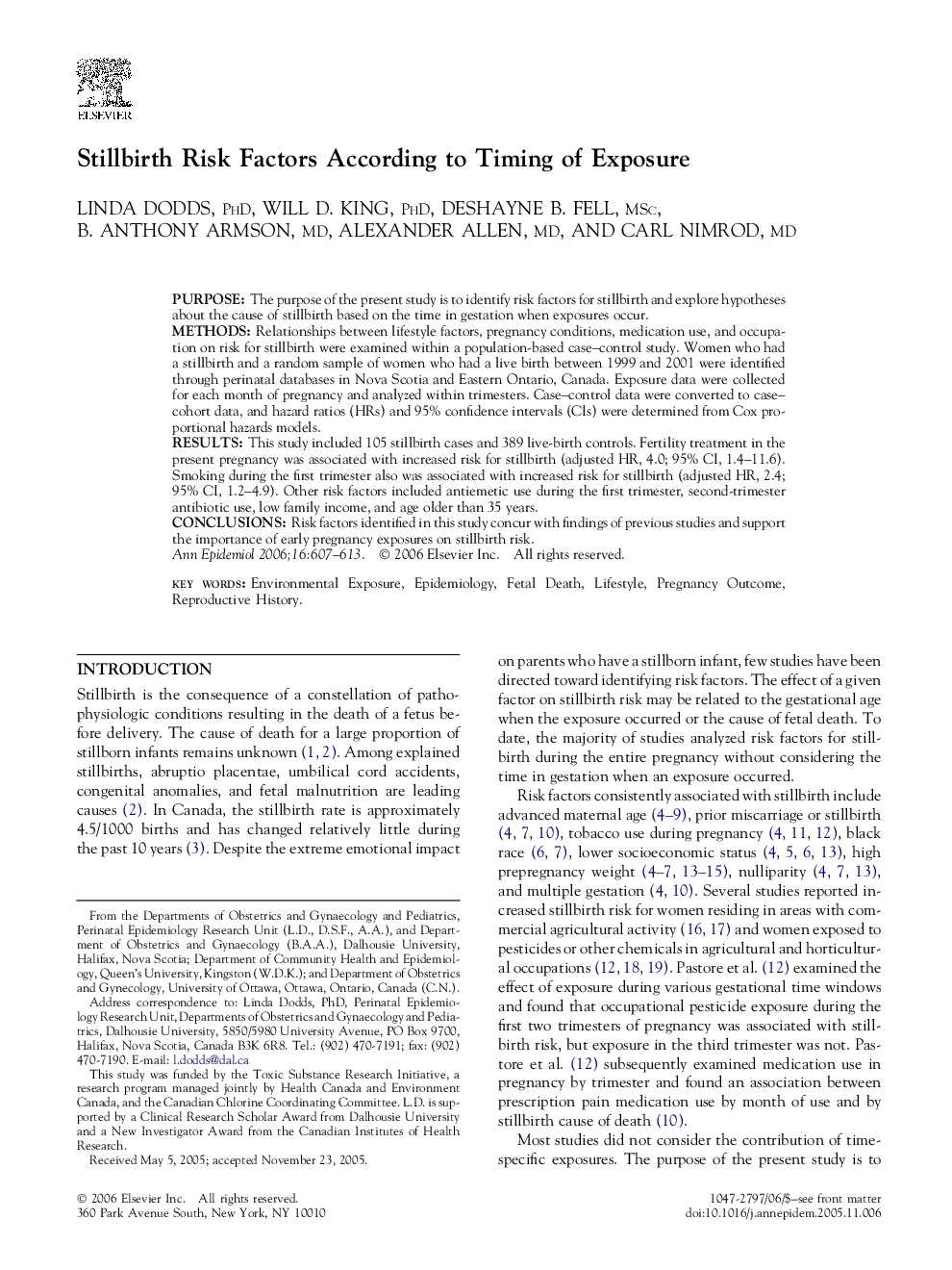| Article ID | Journal | Published Year | Pages | File Type |
|---|---|---|---|---|
| 3445778 | Annals of Epidemiology | 2006 | 7 Pages |
PurposeThe purpose of the present study is to identify risk factors for stillbirth and explore hypotheses about the cause of stillbirth based on the time in gestation when exposures occur.MethodsRelationships between lifestyle factors, pregnancy conditions, medication use, and occupation on risk for stillbirth were examined within a population-based case–control study. Women who had a stillbirth and a random sample of women who had a live birth between 1999 and 2001 were identified through perinatal databases in Nova Scotia and Eastern Ontario, Canada. Exposure data were collected for each month of pregnancy and analyzed within trimesters. Case–control data were converted to case–cohort data, and hazard ratios (HRs) and 95% confidence intervals (CIs) were determined from Cox proportional hazards models.ResultsThis study included 105 stillbirth cases and 389 live-birth controls. Fertility treatment in the present pregnancy was associated with increased risk for stillbirth (adjusted HR, 4.0; 95% CI, 1.4–11.6). Smoking during the first trimester also was associated with increased risk for stillbirth (adjusted HR, 2.4; 95% CI, 1.2–4.9). Other risk factors included antiemetic use during the first trimester, second-trimester antibiotic use, low family income, and age older than 35 years.ConclusionsRisk factors identified in this study concur with findings of previous studies and support the importance of early pregnancy exposures on stillbirth risk.
